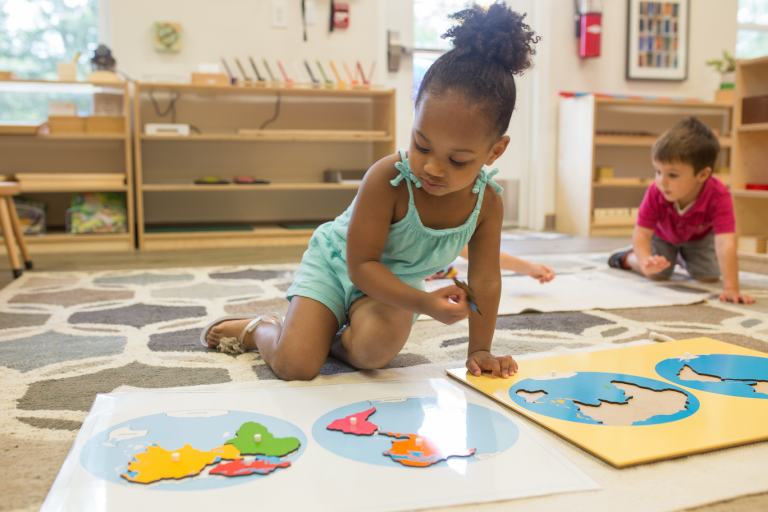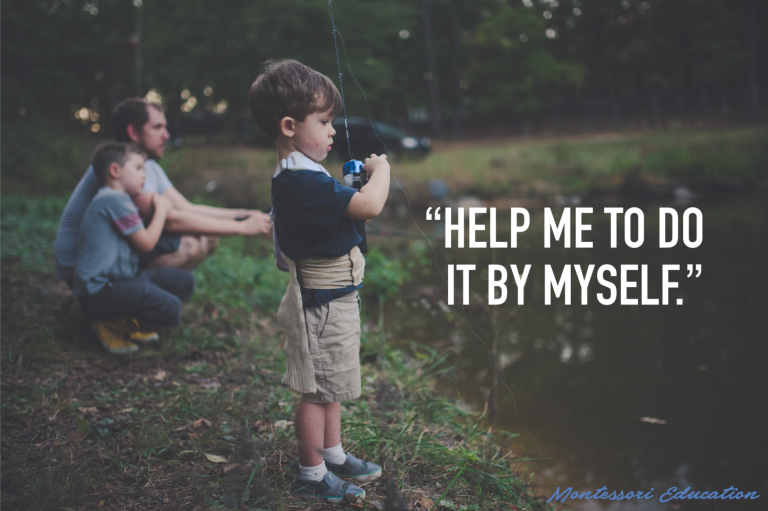How to Handle Tantrums Peacefully in the Montessori Way
Your toddler screams and stomps their feet. They cry, wail, and might even hit you! It’s a toddler tantrum in full force. Handling toddler tantrums the Montessori way isn’t always easy. However, with the right approach, parents and teachers can ensure that tantrums don’t last any longer than necessary.
If you’re a parent of a toddler, then you’ve probably seen a tantrum or two. It’s not always easy to know how to respond to them. They can be frustrating, overwhelming, and tough to handle for both the parent and child. Here is your guide to handling toddler tantrums the Montessori way.
What is a Toddler Tantrum?
A toddler tantrum is an intense outburst of emotion. If you’ve ever experienced one, you know that they can be very powerful. Some common behaviors you might notice in your child are crying, screaming, hitting, stomping feet, throwing themselves on the floor, throwing objects, and more. Some toddlers even hold their breath! Your toddler is more likely to have a tantrum when they are tired, hungry, or frustrated.
Usually, tantrums don’t last very long. Although they feel like they go on for hours, they usually don’t last more than 15 to 20 minutes. They might even be over in as little as a few minutes.
Tantrums are common in toddlerhood when children are 1 to 3 years old. Older children may have tantrums, but they are more common in toddlers. Usually, children outgrow tantrums as they get older.
Toddler Tantrums in Childhood Development
You may wonder, “Are tantrums normal?” The answer is yes. It’s developmentally appropriate for toddlers to have tantrums. Tantrums are part of growing up. The reason is that toddlers haven’t yet developed coping skills for strong emotions. Researchers agree that toddlers also lack the ability to express themselves, making tantrums worse. Because toddlers don’t know what to do when they feel angry, sad, or frustrated, they communicate their feelings through tantrums.
There’s hope if you’re in the middle of the tantrum years. Experts say that as children learn to say how they feel and what they want, their temper tantrums often go away.
How to Deal with Toddler Tantrums Montessori Style in 4 Steps
The Montessori philosophy encourages parents and teachers to show respect for children. This method of teaching and parenting also helps prevent many tantrums from taking place. Discover how to deal with toddler tantrums Montessori style:
- Preventing Tantrums
There are two main ways parents and teachers can prevent tantrums. One way is with routines. Toddlers need routines to feel safe and get their needs met. That’s also true for adults. Perhaps you’ve noticed that when you’re hungry, you have a shorter temper. Now, imagine being just two years old and being hungry. Yet, you don’t know that you’re hungry or what to do about it. So, you have a tantrum.
Routines that include set snack and meal times can help keep your child from getting too hungry. Other important routines include naps and bedtime. When toddlers are overtired, this can also make tantrums more likely. Getting enough exercise and playtime is also important for toddlers.
The other way to prevent tantrums is with the prepared environment. The prepared environment includes the materials and activities in the Montessori classroom. However, it can also include your home. You can prepare your environment to prevent tantrums by encouraging independence.
Toddlers often feel frustrated because they want to be independent, but can’t quite do everything on their own yet. One way you can help them achieve independence is with step stools. That way, toddlers can wash their hands independently. You can also use a low cupboard in the kitchen to provide children with snacks and foods they can prepare on their own. When toddlers have more control and independence, they are happier. In addition, toddlers enjoy activities that challenge them and help them develop their skills. You can include other Montessori activities for toddlers in your home, too!
- Stay Calm and Acknowledge Feelings
When you notice your child is starting to have a tantrum, it’s important to notice their feelings while staying calm yourself. Remember, your toddler still doesn’t know the names of their emotions. You can start by saying what you’re observing. For example, “You seem frustrated,” or “That was so disappointing,” or “I’m so sorry that didn’t go the way you wanted it to.”
When you acknowledge your child’s feelings, you help them learn to identify their feelings. You also validate what they’re feeling. This helps children feel safe and connected to you. When your child feels understood, they’re more likely to calm down.
- Set Boundaries
As a parent, you’ve probably noticed that when you tell your child “no,” that can sometimes trigger a tantrum. When this happens, it’s important to continue to set boundaries. Otherwise your child might learn that they can throw a tantrum to get what they want.
Imagine this scenario. Your toddler asks for a cookie, and you say “no.” So, your toddler has a meltdown. They start crying, stomping their feet, and demanding a cookie. You could give in and the tantrum would stop immediately. However, you’d rather your child wait to have a cookie until after dinner which will be ready in a few minutes. The best way to handle this is to hold the boundary kindly. You might say, “I know you want a cookie right now. You can have one after dinner in a few minutes. I’m sorry it’s hard to wait.”
- Reconnect
When your toddler is calmer and the tantrum is winding down, try to reconnect. Your toddler might enjoy a hug, a cuddle, or some other way to release the tension. If you can find a way to laugh together, that’s great! Another idea is to read a book together or play a quick game together. Any way you can connect with your child can help your child recover from the tantrum.
With these four steps, you can handle toddler tantrums Montessori style.
Toddler Tantrums: When to Worry
Although toddler tantrums are a normal part of childhood, some tantrums can be a sign that your child needs help. Some signs to get in touch with your child’s pediatrician are:
- Your child has frequent tantrums several times a day
- You child’s tantrums last longer than 20 minutes
- Your child’s tantrums get worse after they turn 4
If you have any concerns about your child’s behavior, be sure to get in touch with a healthcare provider.

How to Cope with Toddler Tantrums at Bedtime
Toddler tantrums often show up at bedtime. How can you cope with toddler tantrums at bedtime? There are several ways you might approach bedtime tantrums. Try to gently move your child through a calming bedtime routine. Also, try to set expectations clearly. For example:
- Give your child a five minute warning before it’s time to get ready before bed.
- Set expectations around how many books you’ll read.
- You can set a timer if your child tries to dawdle through bedtime routines. That helps keep you from being the “bad guy.” Instead, it’s the timer’s fault that time’s up.
- Be loving and firm.
Bedtime is hard for parents and toddlers. You’re tired and want them to get to bed, and your toddler is feeling overwhelmed, tired, and upset. Maintaining a routine is the best way to help your toddler get to sleep quickly.
How to Stay Calm During a Toddler Tantrum
Sometimes, a toddler tantrum can be overwhelming for even the most calm, easy-going parent. If you’re struggling to stay calm, it’s okay to take a break. Tell your toddler you need a minute. You can ensure that your toddler is safe before taking a minute in the bathroom. Or, if you’re holding your child, you might put them down and count to ten. Try taking a few deep breaths or call a friend or your partner to vent for a few minutes.
It can also be helpful to think of toddler tantrums as a tunnel. You just have to move through the tunnel to get to the light at the end. They don’t last forever.
Moving Through Toddler Tantrums with Love
Just as with many aspects of parenting, you’ll find your own unique way to parent your child through toddler tantrums. Some children respond well to humor. Others respond well to hugs and cuddling. Others respond best to being left alone for a few minutes. Try different approaches to see what seems to work best for your child.
Managing toddler tantrums is part of parenting. Just as you teach your toddler manners, ensure they eat a healthy diet, and make sure they learn the alphabet, handling tantrums is part of life.
With the four steps of handling toddler tantrums Montessori style, you can move through this stage of parenting with grace and love. Before you know it, your child will learn to identify and express their feelings in new ways.








